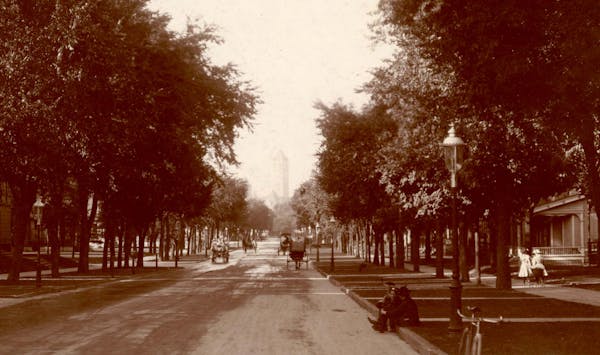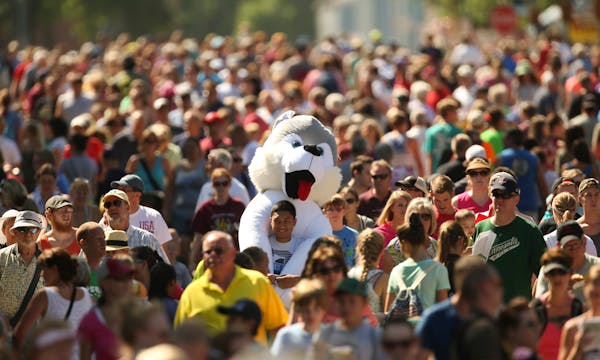How did the Twin Cities become a hub for Somali immigrants?
Listen and subscribe to our podcast: Via Apple Podcasts | Spotify | Stitcher
While attending the University of Minnesota, Lakeville native Erik Borg wondered how the Twin Cities came to have such a large population of Somali Americans. Many, he noticed, lived near the campus.
"I was just kind of curious how a place like Minneapolis becomes home to a thriving population of Somali immigrants," said Borg.
He, along with several other readers, posed the question to Curious Minnesota, our community-driven reporting project fueled by questions from inquisitive readers.
The state has 52,333 people who report Somali ancestry — the largest concentration of Somalis in America — according to the American Community Survey in 2017. How they ended up in the Upper Midwest is a combination of available jobs and a generally welcoming populace. That success then built on itself, leading to more arrivals.
The United States began issuing visas to Somali refugees displaced by civil war in the early 1990s. Initially the Somali community settled in other parts of the country, particularly San Diego. But many refugees struggled to find work with little education and English language skills.
Word gradually spread that meat processing plants in rural Minnesota offered opportunity, and Somalis showed up to take those jobs in the early 1990s. Some began in Marshall, roughly 150 miles southwest of Minneapolis, and eventually Somalis began migrating to the Twin Cities.
"Although many different paths brought people to the state, in truth the unskilled workers who found jobs in Marshall and then loudly blew the whistle were the greatest inspiration to the Somalis who chose Minnesota for their new home," wrote Ahmed Yusuf in his book, "Somalis in Minnesota."
Abdisalam Adam, who is Somali American, migrated here from Virginia in 1995. As part of an oral history project, he told the Minnesota Historical Society that he had heard the state would be a welcoming place — an impression that he confirmed upon his arrival.
"When the people in the refugee camps heard about the early arrivals that came here and were well received, they reported back to their relatives," Adam, who is now assistant principal of Highland Park Senior High School, told the society. "Somalis are an oral society, you know. Things spread by word of mouth. Right in the refugee camps, they knew about Minneapolis, St. Paul ... Then people in other states, like myself, also started moving."
The traditionally white, insular state might have seemed a surprising destination for this group of refugees, especially since many were "secondary" refugee arrivals who first settled in states with more racially diverse populations, such as California, Texas and New York. But Adam told the Star Tribune that Somalis were driven to go where they thought they could get a job, without concern about racial issues.
"They tend to move easily and have nomadic backgrounds," said Adam of Somali people.
Many Somalis also migrated here directly from Africa as "primary" refugee arrivals, meaning that Minnesota was the first state in the United States where they moved. A group of voluntary agencies, including Lutheran Social Service and Catholic Charities, worked with the federal government to resettle the refugees and help them find housing and jobs. Minnesota was a favored location in part due to the success of resettling Hmong refugees in the 1970s and 1980s. As more Somalis formed a larger community, they drew even more friends and family members who wanted to be among their own.
"I think we had a reputation for being a good place to raise a family, a good place to find employment, and a welcoming community, so those were really factors that attracted the families to want to come here," said Maureen Warren, vice president and chief family service officer at Lutheran Social Service of Minnesota.
The influx of Somali immigrants has sometimes stirred a backlash, particularly over their Muslim faith, in St. Cloud and elsewhere.
According to statistics kept by the Minnesota Department of Health, the state began accepting Somali "primary" refugee arrivals in 1993. Primary refugee arrivals remained at several hundred a year throughout the 1990s and exploded in the 2000s, reaching a peak of 3,639 in 2006.
Yet the number of new Somali refugees in Minnesota has fallen dramatically in recent years — dipping to 48 in 2018 — as President Donald Trump has dramatically reduced the number of refugees that America accepts.
The number of Somali-born people living outside of their homeland more than doubled to 2 million between 1990 and 2015, according to the Pew Research Center. The United Nations says that Somalia is one of five countries that together produce two-thirds of the world's refugees; another is Myanmar, which is also a major source of newer refugees in Minnesota.
---
If you'd like to submit a Curious Minnesota question, fill out the form below:
Read more Curious Minnesota stories:
Is Minnesota's tiny Lake Itasca the true source of the Mississippi River?
How much are electric vehicles affected by Minnesota's extreme cold?
Why are Minnesotans the only ones to play Duck, Duck, Gray Duck?
Where did the term Minnesota Nice come from, and what does it really mean?
Why does Minnesota tax Social Security benefits?
Why is Uptown south of downtown in Minneapolis?
Why can't Minnesotans figure out how to zipper merge?
What percentage of Minnesotans spend their entire lives here?
Were Minneapolis' skyways first created to combat the cold – or something else?
How did Minnesota's indigenous people survive the extreme winters?


